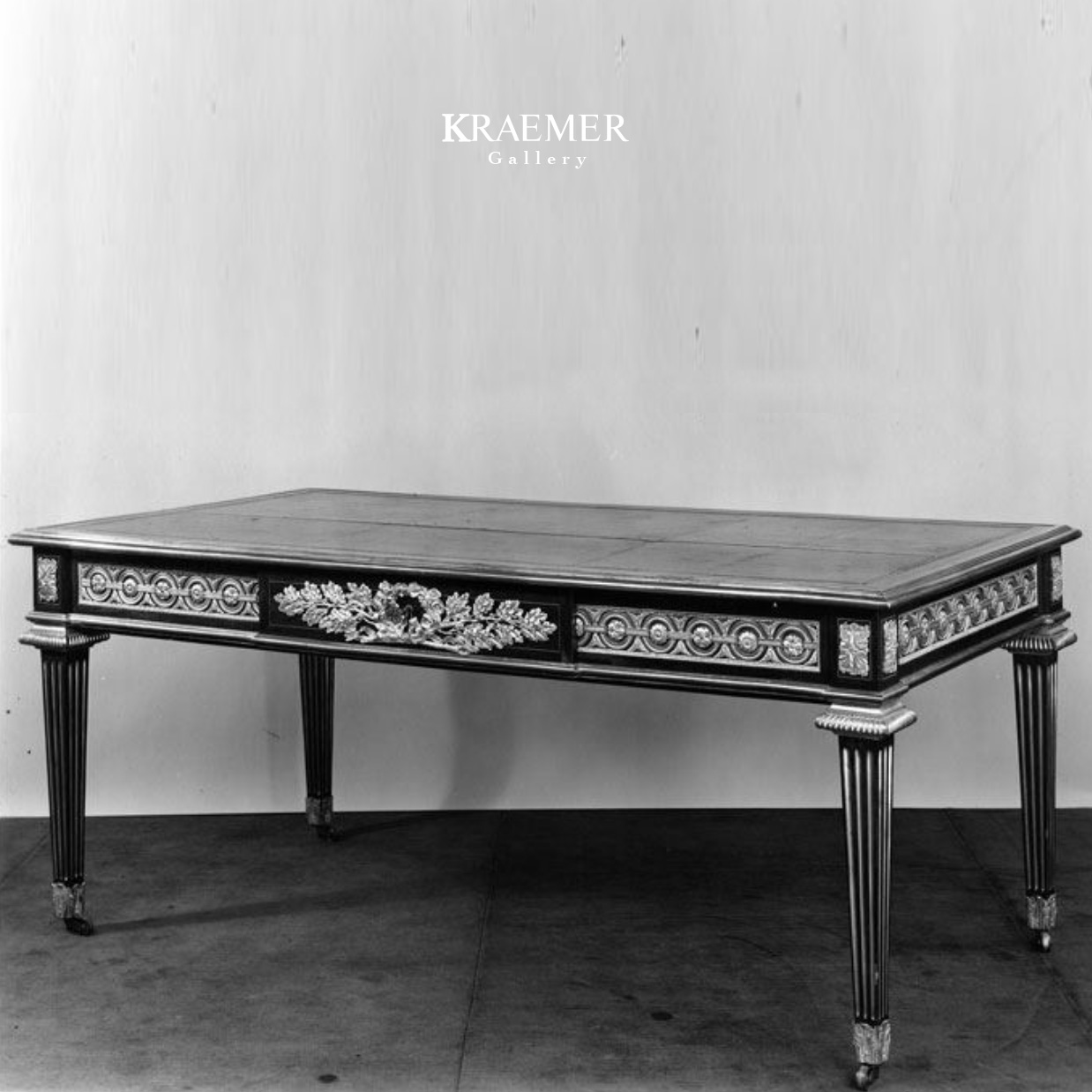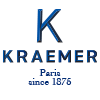IN MUSEUMS
Desk – Louis XVI era
Large flat desk made with mahogany, sycamore and holly veneer, adorned with chiselled, gilded bronze ornaments.
Stamped by J. Fr. Leleu. (1729 – 1807)
Metropolitan Museum of Art, New York.
This flat Louis XVI desk was made by Jean-François Leleu. It features neoclassical elements that were highly prized by the nobility in that era. Leleu’s work is similar to the work of his competitor Jean-Henri Riesener; they were trained together with Jean-François Oeben. This desk is a prime example of Leleu’s use of powerful, masculine neoclassical lines, which are found in the desk’s geometrical fluted legs and the gilded bronze ornaments. The most impressive bronze element is the one at the front of the desk, featuring a flower wreath with two branches on either side. A similar desk can be seen in François Gérard’s portrait of Charles Maurice Talleyrand.
Leleu was known for applying Winckelmann’s motto “noble simplicity and quiet grandeur”, which allowed him to showcase his fine aesthetic sense. Some of his pieces were commissioned by distinguished customers such as Madame du Barry for Louveciennes, the Comte d’Artois for Bagatelle, and the Prince of Condé for the Hôtel de Lassay.


